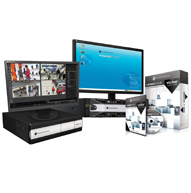A little planning goes a long way toward achieving analytics success, writes Ian Westmacott, Computer Engineering Manager at Tyco Security Products.
The odd impulse purchase aside, most people go into a buying decision with a good idea of what they want from their investment. A couple that is expecting triplets, for instance, knows they can bypass the two-seater sports car or the pickup and look in the SUV or mini-van category for a vehicle that will adequately and safely serve their family. Similarly, a company that is putting in a new video analytics system should outline what it wants it to achieve before selecting, installing and operating it. Or at least that is what best practices would dictate.
Yet, too often the opposite happens. Eager customers and their systems integrators determine the number and styles of cameras they want, maybe based on the newest technology or the best deals available, without first exploring exactly what they want to achieve in terms of analytics. So the end result is a system that is inadequate for the application and one that poorly reflects on the quality of the video analytics because it couldn’t perform the necessary functions properly. Where and how cameras are placed is critical to achieving the most effective outcome with analytics. From camera mounts to the number and type of cameras, many factors can impact the success of video analytics.
Fortunately, you don’t have to go it alone when it comes to planning. Working with your systems integrator, or a manufacturer’s representative, take a hard look at what your expectations are for your analytics system. Are you looking to count people coming into your store, or is your goal to read number plates in a car park? If you want to count customers, do you also want to measure how long they look at a display? Every activity requires careful consideration regarding the type of camera used and where it is placed. People counting is best done on a two-dimensional scale, so a camera mounted overhead works well here. If the camera were placed at eye level, and a crowd came into the store, you might not be able to see each person because some people likely would be blocked by those in front of them. If the goal is to determine who is lingering in a particular spot, however, then a wide-angle camera is the proper choice. And if you want to do both of these things in the same space, you’ll need multiple cameras mounted appropriately.
Lighting is another key consideration. If a scene goes in and out of shadows frequently, it will affect the accuracy of the information received. Trying to read license plates? Think about how headlights could play havoc with a camera if positioned incorrectly. Before going ahead with an analytics programme, it’s important to consider all of the factors that will impact video quality. From illumination to separating assets and people to dealing with obstructions and movement, all of these can make a great analytics system an ineffective one if not handled properly. So sit down at that computer — or if you’re old school, get out that pen and paper — and list what you want your system to do. Then go through all the factors that could influence your outcome before making a final selection with the help of an integrator or supplier on cameras and mounts. The success of your analytics system depends on it.










